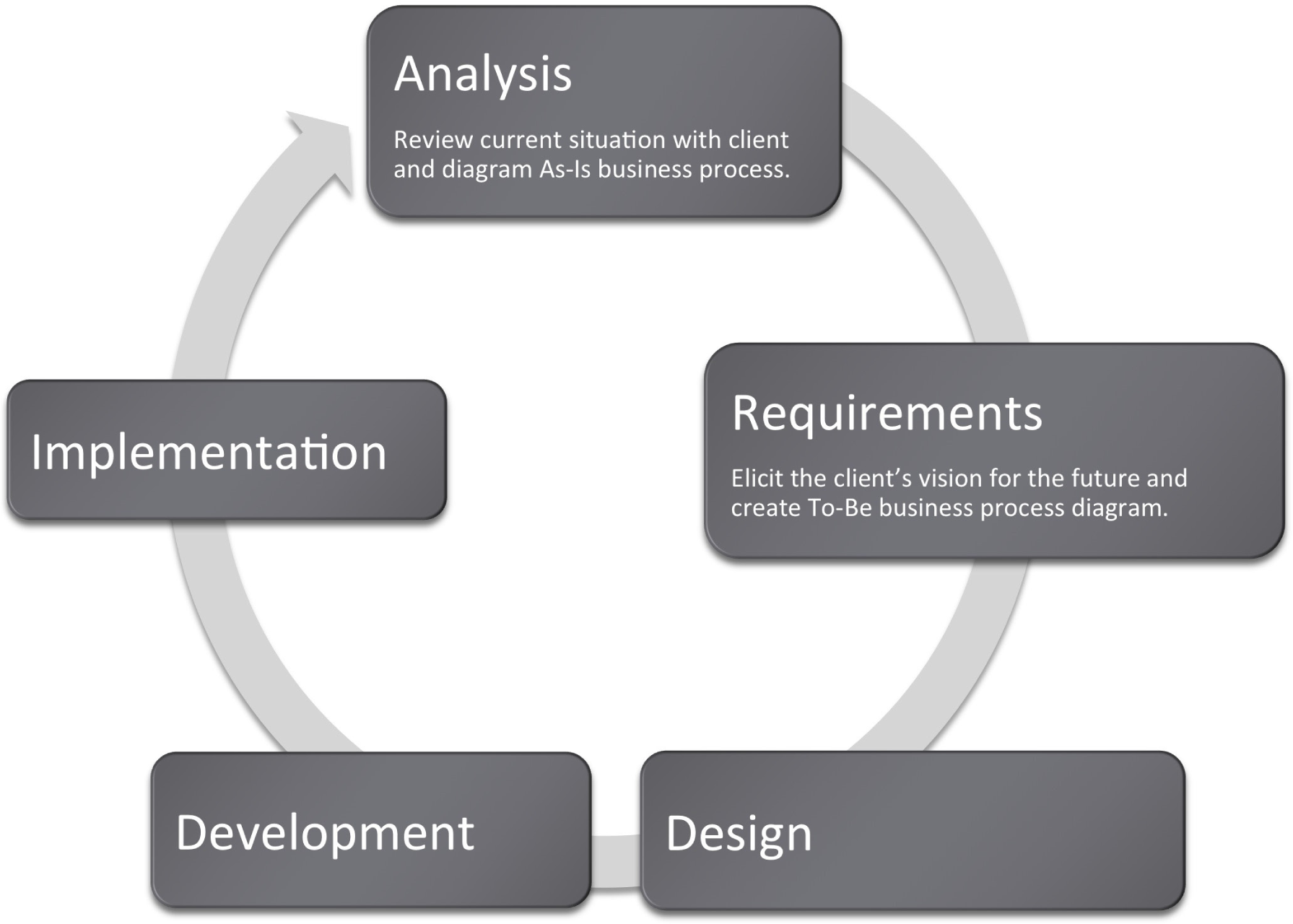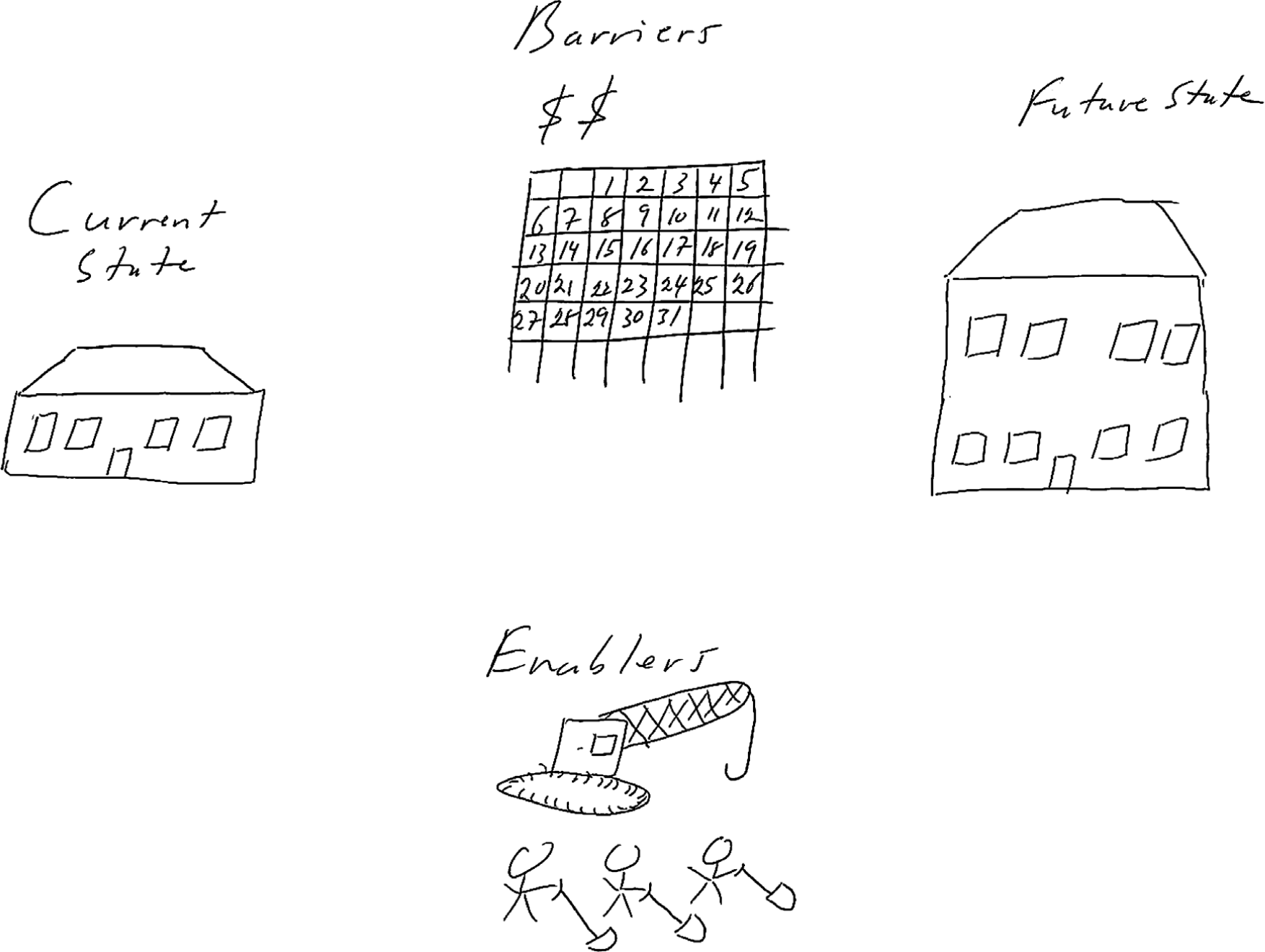2.1: What Is a Business Process?
- Page ID
- 4419
\( \newcommand{\vecs}[1]{\overset { \scriptstyle \rightharpoonup} {\mathbf{#1}} } \)
\( \newcommand{\vecd}[1]{\overset{-\!-\!\rightharpoonup}{\vphantom{a}\smash {#1}}} \)
\( \newcommand{\id}{\mathrm{id}}\) \( \newcommand{\Span}{\mathrm{span}}\)
( \newcommand{\kernel}{\mathrm{null}\,}\) \( \newcommand{\range}{\mathrm{range}\,}\)
\( \newcommand{\RealPart}{\mathrm{Re}}\) \( \newcommand{\ImaginaryPart}{\mathrm{Im}}\)
\( \newcommand{\Argument}{\mathrm{Arg}}\) \( \newcommand{\norm}[1]{\| #1 \|}\)
\( \newcommand{\inner}[2]{\langle #1, #2 \rangle}\)
\( \newcommand{\Span}{\mathrm{span}}\)
\( \newcommand{\id}{\mathrm{id}}\)
\( \newcommand{\Span}{\mathrm{span}}\)
\( \newcommand{\kernel}{\mathrm{null}\,}\)
\( \newcommand{\range}{\mathrm{range}\,}\)
\( \newcommand{\RealPart}{\mathrm{Re}}\)
\( \newcommand{\ImaginaryPart}{\mathrm{Im}}\)
\( \newcommand{\Argument}{\mathrm{Arg}}\)
\( \newcommand{\norm}[1]{\| #1 \|}\)
\( \newcommand{\inner}[2]{\langle #1, #2 \rangle}\)
\( \newcommand{\Span}{\mathrm{span}}\) \( \newcommand{\AA}{\unicode[.8,0]{x212B}}\)
\( \newcommand{\vectorA}[1]{\vec{#1}} % arrow\)
\( \newcommand{\vectorAt}[1]{\vec{\text{#1}}} % arrow\)
\( \newcommand{\vectorB}[1]{\overset { \scriptstyle \rightharpoonup} {\mathbf{#1}} } \)
\( \newcommand{\vectorC}[1]{\textbf{#1}} \)
\( \newcommand{\vectorD}[1]{\overrightarrow{#1}} \)
\( \newcommand{\vectorDt}[1]{\overrightarrow{\text{#1}}} \)
\( \newcommand{\vectE}[1]{\overset{-\!-\!\rightharpoonup}{\vphantom{a}\smash{\mathbf {#1}}}} \)
\( \newcommand{\vecs}[1]{\overset { \scriptstyle \rightharpoonup} {\mathbf{#1}} } \)
\( \newcommand{\vecd}[1]{\overset{-\!-\!\rightharpoonup}{\vphantom{a}\smash {#1}}} \)
\(\newcommand{\avec}{\mathbf a}\) \(\newcommand{\bvec}{\mathbf b}\) \(\newcommand{\cvec}{\mathbf c}\) \(\newcommand{\dvec}{\mathbf d}\) \(\newcommand{\dtil}{\widetilde{\mathbf d}}\) \(\newcommand{\evec}{\mathbf e}\) \(\newcommand{\fvec}{\mathbf f}\) \(\newcommand{\nvec}{\mathbf n}\) \(\newcommand{\pvec}{\mathbf p}\) \(\newcommand{\qvec}{\mathbf q}\) \(\newcommand{\svec}{\mathbf s}\) \(\newcommand{\tvec}{\mathbf t}\) \(\newcommand{\uvec}{\mathbf u}\) \(\newcommand{\vvec}{\mathbf v}\) \(\newcommand{\wvec}{\mathbf w}\) \(\newcommand{\xvec}{\mathbf x}\) \(\newcommand{\yvec}{\mathbf y}\) \(\newcommand{\zvec}{\mathbf z}\) \(\newcommand{\rvec}{\mathbf r}\) \(\newcommand{\mvec}{\mathbf m}\) \(\newcommand{\zerovec}{\mathbf 0}\) \(\newcommand{\onevec}{\mathbf 1}\) \(\newcommand{\real}{\mathbb R}\) \(\newcommand{\twovec}[2]{\left[\begin{array}{r}#1 \\ #2 \end{array}\right]}\) \(\newcommand{\ctwovec}[2]{\left[\begin{array}{c}#1 \\ #2 \end{array}\right]}\) \(\newcommand{\threevec}[3]{\left[\begin{array}{r}#1 \\ #2 \\ #3 \end{array}\right]}\) \(\newcommand{\cthreevec}[3]{\left[\begin{array}{c}#1 \\ #2 \\ #3 \end{array}\right]}\) \(\newcommand{\fourvec}[4]{\left[\begin{array}{r}#1 \\ #2 \\ #3 \\ #4 \end{array}\right]}\) \(\newcommand{\cfourvec}[4]{\left[\begin{array}{c}#1 \\ #2 \\ #3 \\ #4 \end{array}\right]}\) \(\newcommand{\fivevec}[5]{\left[\begin{array}{r}#1 \\ #2 \\ #3 \\ #4 \\ #5 \\ \end{array}\right]}\) \(\newcommand{\cfivevec}[5]{\left[\begin{array}{c}#1 \\ #2 \\ #3 \\ #4 \\ #5 \\ \end{array}\right]}\) \(\newcommand{\mattwo}[4]{\left[\begin{array}{rr}#1 \amp #2 \\ #3 \amp #4 \\ \end{array}\right]}\) \(\newcommand{\laspan}[1]{\text{Span}\{#1\}}\) \(\newcommand{\bcal}{\cal B}\) \(\newcommand{\ccal}{\cal C}\) \(\newcommand{\scal}{\cal S}\) \(\newcommand{\wcal}{\cal W}\) \(\newcommand{\ecal}{\cal E}\) \(\newcommand{\coords}[2]{\left\{#1\right\}_{#2}}\) \(\newcommand{\gray}[1]{\color{gray}{#1}}\) \(\newcommand{\lgray}[1]{\color{lightgray}{#1}}\) \(\newcommand{\rank}{\operatorname{rank}}\) \(\newcommand{\row}{\text{Row}}\) \(\newcommand{\col}{\text{Col}}\) \(\renewcommand{\row}{\text{Row}}\) \(\newcommand{\nul}{\text{Nul}}\) \(\newcommand{\var}{\text{Var}}\) \(\newcommand{\corr}{\text{corr}}\) \(\newcommand{\len}[1]{\left|#1\right|}\) \(\newcommand{\bbar}{\overline{\bvec}}\) \(\newcommand{\bhat}{\widehat{\bvec}}\) \(\newcommand{\bperp}{\bvec^\perp}\) \(\newcommand{\xhat}{\widehat{\xvec}}\) \(\newcommand{\vhat}{\widehat{\vvec}}\) \(\newcommand{\uhat}{\widehat{\uvec}}\) \(\newcommand{\what}{\widehat{\wvec}}\) \(\newcommand{\Sighat}{\widehat{\Sigma}}\) \(\newcommand{\lt}{<}\) \(\newcommand{\gt}{>}\) \(\newcommand{\amp}{&}\) \(\definecolor{fillinmathshade}{gray}{0.9}\)“If you don’t know where you’re going, you might not get there.”
-Yogi Berra
Learning Objectives
- Identify a business process
- Describe the difference between an As-Is and To-Be business process
- Ask questions to elicit business process information from the client
Introduction
Every information system is designed to improve business in some way. However, before making an improvement, it is critical to understand the current business process. In this chapter we will develop a technique to diagram business processes. We will first diagram the current business process—the so-called As-Is process. After studying the process, we will be in a position to propose and diagram a future process—the so-called To-Be process. If we have done our job well, the To-Be process will improve upon the As-Is process, making it more efficient, effective, user friendly, and so forth. In other words, every process improvement should move the business closer to achieving its goals.
Where Are We in the Life Cycle?
Many information systems projects are conceived of in a life cycle that progresses in stages from analysis to implementation. The diagram below shows the stages that we touch in the current chapter:

Goal Directed Activities.
Implicit in each current and future state are one or more business processes. A business process is a set of goal directed activities. In other words, a process describes the actions To-Be taken to accomplish a task. For example, applying to a university, filing taxes, and evaluating employees are all processes. The steps in applying to a university might include filling out an online form, submitting a credit card payment, requesting test scores be sent, and requesting that high school transcripts be sent.
Note that all of the processes mentioned above took place even before the advent of computers. Try to imagine how. Information systems simply transform the processes with the goal of making the process more efficient, convenient, effective, reliable, and so forth.
First, we represent the current (usually deficient) state As-Is process. Seeing the As-Is process diagrammed exposes obvious areas for improvement in the process. For example, many years ago students registered for classes in person. The As-Is process in that era might have shown a student waiting in line outside a large auditorium. When his turn comes up, the student enters the auditorium. There are tables representing each department staffed with faculty from that department. For each course that the student wishes to take, he must find the corresponding department table and add his name to the list for that class. Buying concert tickets followed a similar process before services like Ticket Master went online. People used to camp out for days in advance outside the Ticket Master office.
Sometimes information technology may improve processes, other times no technology is required. Sometimes the solution is as simple as providing information for individuals completing a business process at the appropriate time, or simply rearranging the steps in the business process, in which case, no new information technology is needed.
The redesigned and improved business process is called the To-Be process. This process takes into consideration the deficiencies identified in the As-Is process and the goals of the business. The area of work that focuses on improving business processes is called business process redesign. Individuals performing this work focus on understanding the As-Is process and how to improve it in the To-Be process.
Business Process Examples:
- Shopping at a grocery store
- The deli
- Taking numbers
- Rules about which products can be sliced on which machines
- Rules about wrapping product after slicing
- The fish counter
- Taking numbers
- Rules about how to prepare the fish—head and tail off and so forth.
- Checkout
- Scanning and weighing procedures
- Gathering customer data
- Printing customized coupons
- Optimal bagging
- Taking payment
- The deli
- Shopping at an online retailer
- Product display
- Best selling
- By price
- By rating
- Cross selling—“You might also like…”
- Shopping cart and checkout processes
- Product display
- Inventory management
- Determining the inventory need
- Reordering with supplier
- Tracking and receiving shipments
- Stocking shelves
Note that most business processes subsume other business processes. One of the toughest challenges is knowing what process to focus on and with what degree of granularity to zoom in on the process. Never lose site of the problem you are trying to solve—and use that as your filter.
The Initial Client Meeting
Obviously, you can not diagram a business process without understanding the business. This will require meetings with the client. It is best to walk into those meetings with a willingness to listen rather than pretending that you know the client’s business. Ask open ended questions and take lots of notes.
Those that design systems are called business analysts or consultants. Analysts begin their work with an initial client meeting. The quality of the questions asked at that meeting may well determine the success or failure of the project. Using the following four open ended questions can help in this consulting situation (Starr, 2010):
- Current state: What does the client see as the current state of the situation/project?
- Future state: What is the vision of the client for the end point of the situation/project?
- Barriers: What barriers does the client envision will hinder reaching the vision?
- Enablers: What is the client already doing to reach the vision? What does the client think will help?
Note that these questions capture the aspirations of the client as well as perceived barriers and enablers to reach that vision. The assumption here is that the client knows her business pretty well, and the goal of the initial meeting is to capture her knowledge and vision without jumping to a solution.

The initial client meeting for a home renovation project adding a second story to a home. Note the barriers, time and money, and the enablers, the crane and manpower. Business problems require a similar type of analysis. Never assume that you know these items. Give the client the opportunity to explain. It will save you a great deal of time in the final analysis.
Key Takeaways
- A business process is a set of goal directed activities
- The As-Is process captures the analysis of the current state of the business
- The To-Be process captures the client’s requirements for the future state of the business. Ultimately the To-Be process will be the measuring rod against which you will evaluate the completed system.
Questions and Exercises
- Identify three business processes involved in the purchase of a car.
- Describe how the process of going on a date changed with the introduction of online dating services such as Match.com. What do you see as the pros and cons?


